
* Dedicated helicopter gunships have been built all over the world. The first European contribution to the field was the Italian Agusta "A129 Mangusta", and it has now been joined by the multinational Airbus Helicopter "Tiger". This document provides a history and description of the Mangusta and the Tiger. A list of illustration credits is included at the end.

* Through most of the 1970s, European armed forces considered obtaining a dedicated helicopter gunship, but most opted over the short run to simply arm utility helicopters. Italy was the first European nation to produce a purpose-built gunship. In 1978, the Italian Agusta company began work on a light anti-armor helicopter gunship for the Italian Army. The original idea was to modify the Agusta A109 utility helicopter for this purpose, but the company quickly realized that this was asking too much of the A109, and went to an almost completely "clean sheet" design.
The first of five prototypes of the Agusta "A129 Mangusta (Mongoose)" helicopter gunship performed its initial official flight on 15 September 1983, with the fifth in the air by March 1986. Successful trials led to a production order for 66 machines, though this was later trimmed to 60. After some delays, mostly due to development of the missile sighting system, the first batch of five operational machines was delivered in 1990.
* As it emerged, the Mangusta had a fairly typical helicopter gunship configuration: a sharklike fuselage with a conventional main / tail rotor drive configuration; tandem stepped cockpits, with the gunner in front and the pilot in back; stub wings for weapons loads, with two stores pylons per wing, for a total of four; and a nose-mounted day-night weapons sight.
The A129 was powered by twin Rolls-Royce Gem 2 Mark 1004D turboshafts, with an emergency rating of 772 kW (1,035 SHP) each, license-built by Piaggio under the designation RR1004. The engines were separated by an armored firewall and each engine had its own fuel system, with a crossfeed to allow each engine to draw from the other's fuel system. The engine installations were designed to reduce noise and infrared signature; infrared suppressors could be fitted to the exhausts. Triple-redundant hydraulic systems were used to ensure reliability.
___________________________________________________________________
AGUSTA A129 MANGUSTA:
___________________________________________________________________
main rotor diameter:
11.9 meters (39 feet)
tail rotor diameter:
2.24 meters (7 feet 4 inches)
fuselage length:
12.275 meters (40 feet 3 inches)
footprint length:
14.29 meters (46 feet 11 inches)
overall height:
3.35 meters (11 feet )
empty weight:
2,520 kilograms (5,575 pounds)
MTO weight:
4,100 kilograms (9,040 pounds)
max speed:
315 KPH (195 MPH / 180 KT)
hover ceiling (in ground effect):
3,705 meters (12,300 feet)
range (internal fuel):
560 kilometers (350 MI / 300 NMI)
endurance:
3 hours
___________________________________________________________________
The fuselage was built mostly with composites and designed to be crashworthy, with the aircrew sitting in Martin-Baker "Helicopter Armored Crashworthy Seats Mark 1 (HACS 1)". The cockpits had flat window panels, with the window panels on the right opening for crew access. The window panels could be blown off in an emergency for a rapid escape.
The fuselage could resist hits from projectiles ranging in size up to 12.7 millimeters (0.50 caliber). The main rotor had four blades, while the tail rotor had two. The rotor blades were made of composite materials, and were also designed to withstand 12.7-millimeter projectile hits, and tolerate 23-millimeter projectile hits. The blades could chop through tree branches 15 centimeters (6 inches) thick. The rotor hubs used elastomeric bearings that didn't require lubrication. The main rotor driveshaft was hollow to allow fit of a mast-mounted sight.

The fixed tailwheel landing gear was heavily braced with shock absorbers. The stub wings could be raised 3 degrees and lowered 12 degrees from the horizontal. The Mangusta had no built-in armament. Its main weapon was the US-built TOW wire-guided anti-tank missile. In addition, the Mangusta could carry stores such as 70-millimeter (2.75-inch) or 81-millimeter (3.18-inch) unguided rocket pods; or 7.62-millimeter, 12.7-millimeter, or 20-millimeter gun pods. A typical weapon load was a four-round TOW pack on each outer pylon, for a total of eight TOWs, and an unguided rocket or gun pod on each inner pylon. Maximum weapons load was 1,200 kilograms (2,645 pounds).
A digital "Integrated Multiplex System (IMS)", controlled by two computers and linked by a MIL-STD 1553B databus, integrated rotorcraft avionics, hydraulic systems, fuel systems, engine systems, and weapon systems. The IMS computer could store up to a hundred waypoints or ten flight plans, and worked in conjunction with a continuous-wave Doppler radar altimeter for low-level flight navigation.
The crew control panels were based on color multi-function displays (MFDs) that provided flight and system status, as well as map information. Targeting was performed through a sighting system in the nose -- the Mangusta would never actually get a mast-mounted sight, plans for one having been abandoned due to cost constraints. The sighting system included an optical sight, a forward-looking infrared (FLIR) sight, and a laser rangefinder / target designator. The pilot used a wide-angle FLIR mounted above the nose to fly at night and in bad weather.
BACK_TO_TOP* The 16th production Mangusta introduced:
Manufacture was halted in 1992 after delivery of 45 production machines. With the end of the Cold War, the Italian Army wanted to re-assess their requirements. However, even at the time, the Italians were beginning to realize that the "New World Order" wasn't going to be exactly a case of "peace breaking out all over": instead of one big threat, Western military forces now had to deal with a bewildering range of smaller threats.
Three A129s were committed to the intervention in Somalia from late 1992 to the spring of 1994. The Italians had a personal interest in Somalia, since the place had once been part of Italy's colonial empire. The Mangustas flew armed reconnaissance sorties for UN forces, and were armed with TOW missiles and 81-millimeter unguided rockets. Four more A129s later operated off the carrier GARIBALDI in the embarrassing final withdrawal of Western forces from Somalia in early 1995.
The intervention demonstrated that the Mangusta was reliable and maintainable under difficult field conditions, but also underlined the fact that the Mangusta's original operational role, that of tank-buster, was not really appropriate for peacekeeping operations. The A129 definitely needed a built-in gun, since nailing a sniper with a TOW was, though certainly effective, expensive. Other items that proved desireable included a video-recorder capability for scout missions, a Global Position System / Inertial Navigation System (GPS-INS), and sand filters.
The A129 was also committed to peacekeeping operations in Albania following that country's economic and civil collapse in 1997. The Mangustas carried FN-Herstal HMP-50 12.7-millimeter gun pods and were fitted with countermeasures, including infrared exhaust suppressors and an infrared jammer. Mangusta service in that intervention appears to have been mostly uneventful.
* Even before the Mangusta's service in Somalia, Agusta had been considering improvements for the A129, with an eye towards selling the machine on the export market. In 1986, the governments of Britain, Italy, the Netherlands, and Spain signed a memorandum of understanding (MOU) to investigate an improved version of the A129, named the "Joint European Helicopter Tonal", where "Tonal" is the name of an Aztec deity. The Tonal was to feature more powerful engines, a new rotor system, retractable landing gear, improved sensors, and more powerful armament. However, the UK and the Netherlands backed out of the project in 1990 when they decided to obtain the US AH-64 Apache gunship instead, and the Tonal project collapsed.
That was a disappointment but Agusta didn't give up, flying a series of Mangusta modifications with various improvements for possible export sales. In 1988, an evaluation machine was flown with two Allison-Garrett LHTEC T800 turboshafts, with 894 kW (1,200 SHP) each, full-authority digital engine controls (FADEC), and an uprated power transmission to handle the greater power. In 1992, the same machine was fitted with a nose turret with a single-barrel Lucas 12.7-millimeter (0.50-caliber) machine gun.
This evolution led to the initial flight of the more-or-less definitive "A129 International" on 9 January 1995. This variant featured LT800 turboshafts and a nose turret, though the turret was built by OtoBreda and carried an Alenia Difensa TM-197B 20-millimeter cannon -- a license-built version of the General Electric (now Lockheed Martin) M197 three-barreled Gatling-type gun.
The A129 International also featured a distinctive five-bladed "Penta" rotor, substantially greater internal fuel capacity, improved avionics, and a "glass cockpit". It was qualified to carry the US-built AGM-114L Hellfire anti-armor missile along with TOW, plus the US-built Stinger air-to-air missile (AAM). The Hellfire was considered early in the Mangusta development program but had originally been rejected, since with its substantially higher capability also came a substantially greater price. Agusta also considered qualification of the French Matra Mistral AAM, but decided to focus on the Stinger.
Most of the improved avionics were not actually fitted in the demonstrator, partly because some of it hadn't been selected, and partly because some of it was expected to be defined by customers. However, in principle the new avionics was to include an upgraded navigation system built around a GPS-INS unit; a new, more powerful main computer with modernized software; improved FLIR and targeting system, with a CCD camera replacing the direct optics; and a self-defense suite. The glass cockpit included two 15 x 20 centimeter (6 x 8 inch) color MFDs.
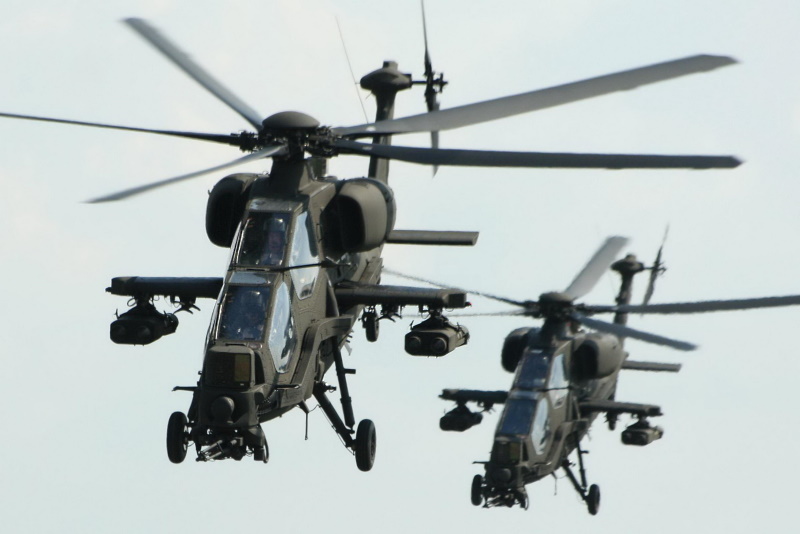
* Agusta did not get any quick customer response with the A129 International, but Italian Army did become interested in many of its features. The service decided to adopt a major subset of those features in a new Mangusta variant, the "A129 CBT (Combattimento)". The A129 CBT included the five-blade rotor, the nose turret, most of the advanced avionics, plus support of Hellfire, replacing the antiquated TOW, and Stinger from the A129 International. The A129 CBT did retain the Gem turboshafts, though an uprated transmission was fitted, and apparently the cockpit layout was less sophisticated than that of the A129 International.
As mentioned, only 45 of the original 60 Mangustas planned by the Italian Army had been built into the early 1990s. In 1999, the service placed an order for the remaining 15, to be built to A129 CBT standard. In late 2001, another contract was awarded to AgustaWestland -- as the company had become known following a merger with Westland of the UK in 2000 -- to upgrade all surviving A129s to the CBT specification. Deliveries were from 2002, the machines being redesignated "AH-129C" in service.
A second-phase "AH-129D" upgrade program has been performed, with about two-thirds of the fleet being upgraded to a new combat system from Rafael of Israel. The primary focus of the AH 129D upgrade was support of the Rafael Spike-ER missile, with over twice the range of TOW -- as well as "fire and forget" capability, plus midcourse updates via a fiber-optic thread. The AH 129D was given a number of system updates to support the Spike-ER:
The Mangusta crew could fire on a target without seeing it, with the gunner using the missile's optical / infrared imaging seeker to pick out the target for terminal attack. The first AH 129Ds were delivered to the Italian Army in early 2015. In 2016, AgustaWestland became "Leonardo Helicopters", though a conglomerate reorganization, though the Mangusta remained the A129.
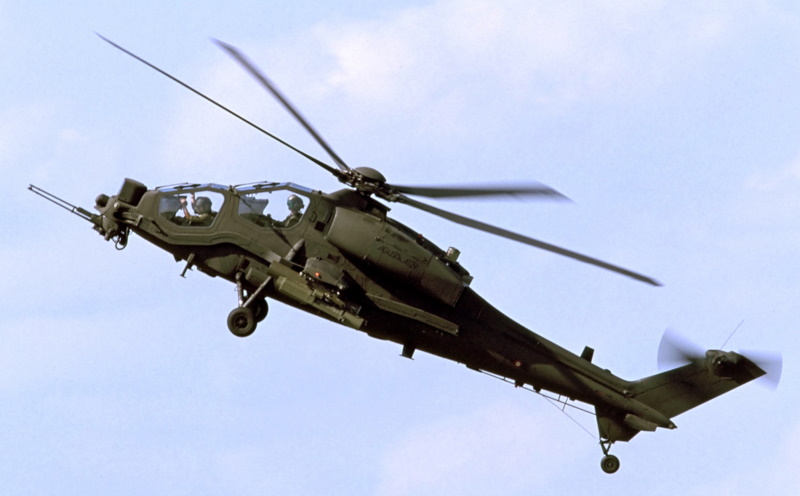
AgustaWestland finally got a foreign buy for the Mangusta in the spring of 2007, when the Turkish Army selected the type to replace Bell AH-1 Cobras. The initial buy was for 51 machines, with the "T129 ATAK", built in Turkey by Turkish Aerospace Industries (TAI), towards a projected total of 91; the Turkish Ministry of the Interior wants to obtain 27. The T129 featured Turkish avionics and weaponry.
Deliveries began in the spring of 2014, first deliveries being of a "T129A" configuration that wasn't up to full spec. Deliveries of the full-spec "T-129B" began a year later, with T129As brought up to T129B spec. Pakistan ordered a batch of 30 T129s in 2018, with the Philippines ordering 6 in 2020; deliveries to the Philippines were in 2021:2023, but deliveries to Pakistan were held up because the USA didn't approve export of the engines. Six T129Bs were sold to Nigeria in 2022, with deliveries in 2023.
* A concept was floated for a navalized Mangusta, known as the "A129 Antiship" and referred to as the "Gannet" in some sources, with nose-mounted radar; an Elettronica "electronic support measures (ESM / emitter targeting)" system; chaff dispensers; and armament including antiship missiles, such as two Marte 2s or four Sea Skuas. Another proposal was for an "A139" utility transport derivative, with a capacity of ten passengers. Neither of these concepts reached the prototype stage.
Leonardo is moving forward on a next-generation follow-on to the A129, designated the "AW249 Fenix (Phoenix)". It is a clean-sheet design, if with a general configuration comparable to the A129, incorporating advanced technologies across the board, including modern defensive countermeasures, drone control, and battlefield network. It is designed for survivability. The only major element inherited from the A129 is the cannon turret.
The program was initiated in 2017, with a prototype and three pre-series machines to be built; initial flight of the prototype was on 12 August 2022. Introduction to service is expected in 2025, with the A129 to be retired. The Italian Army is expecting to obtain 48 TW129; the Poles are considering obtaining it as well.
TAI is now working on a follow-on to the T129 ATAK, the "T929 ATAK 2", with the same overall configuration as the original, but more advanced and capable across the board. The project was initiated in 2018, with the first ATAK 2 performing its initial flight on 28 April 2023. Developmental machines will be powered by Ukrainian Motor Sich TV3-117 turboshafts, with the Ukrainian connection possibly intended to evade US export restrictions. The Ukraine War may delay delivery of the engines.
BACK_TO_TOP* In the early 1980s the German Army wanted to obtain a second-generation anti-armor helicopter, formalized in the "PanzerAbwehr Hubschrauber 2 (PAH-2)" specification. The French Army was also seeking a new anti-armor helicopter under the "Helicoptere Anti-Char (HAC)" specification, and so the two countries decided to collaborate, signing an MOU in 1984.
As is not unusual in collaborative defense efforts the program ran into a few snags, and in fact it was halted completely in mid-1986 to be completely reconsidered. It was re-initiated in March 1987, with the revised program projecting the construction of the PAH-2 / HAC anti-armor variant for both Germany and France, and an escort version, the "Helicoptere d'Appui Protection (HAP)" for the French.
Full-scale development got the green light at the end of 1987. A development contract specifying construction of five prototypes of the "Tiger" or "Tigre", as the gunship was named, was finally awarded on 30 November 1989 to Eurocopter GMBH, a joint company that had formed by Aerospatiale of France and MBB of Germany in 1985 to pursue the program. Eurocopter would later take over all the helicopter activities of both parent firms -- which in turn became major parts of the European Aeronautics Defense & Space (EADS) conglomerate. EADS would become the "Airbus Group" in turn in early 2014, with Eurocopter becoming Airbus Helicopters; the 21st-century name is used here for simplicity.
During this development phase, the Germans considered obtaining a close-support variant of the Tiger, designated the "Unterstuetzungs Hubschrauber (UHU)", along with the PAH-2 anti-armor variant, but finally decided to acquire a multi-role variant for the anti-armor, close support, and escort roles. This multi-role machine was designated the "Unterstuetzungs Hubschrauber Tiger (UHT)".
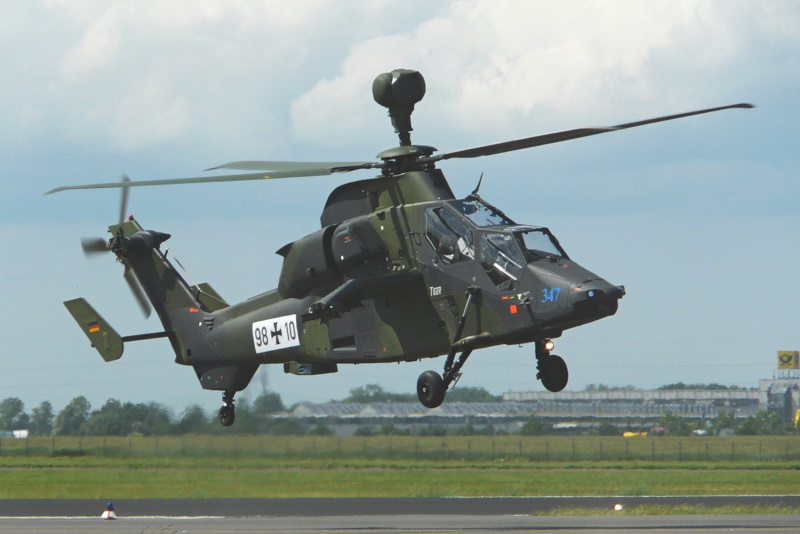
As if this name game wasn't bewildering enough, for a time the French also referred to the HAP as the "Gerfaut (Gyrfalcon)", but the name was formally abandoned in 1993, probably because it was confusing, and now all the variants are known as "Tigers". To add to the confusion, the HAC version was canceled later in the development program, as discussed below.
The first Tiger prototype flew on 27 April 1991. The second prototype followed in April 1993, with the three remaining prototypes following in November 1993, December 1994, and February 1996. The first three machines were basically aerodynamic and system test machines, but the fourth was the French HAP configuration prototype and the fifth was the German UHT configuration prototype.
The first prototype was grounded for static fatigue testing in early 1996. The second prototype was brought up to HAP configuration in 1996, and the third prototype was brought up to UHT configuration in 1997. The fourth prototype was lost in a crash in Australia in early 1998 while being evaluated by the Australian Army.
The initial production contract was signed on 20 June 1997. The first production machine, a German UHT variant, was rolled out in March 2002. The first production French HAP escort variant performed its initial flight on 26 March 2003. Initial service deliveries of the UHT and HAP were in the spring of 2005.
BACK_TO_TOP* The Tiger, as introduced, was of conventional helicopter gunship configuration, with the two crew sitting in tandem, though somewhat unusually the pilot was in the front seat and the gunner was in the back. The seats were offset to opposite sides of the centerline to improve the view forward for the gunner in back. The airframe was largely made of composites.
Both cockpits had twin color MFDs, which showed sensor imagery, flight and system status, and a "Eurogrid" moving-map display. The Tiger was fitted with a GPS-INS navigation system with ring-laser gyros, had Doppler radar for low-altitude operation, and a set of low-speed air-data probes. Several processors supported the display and navigation systems. Avionics systems were linked by a MIL-STD 1553B databus. A self-defense suite was fitted, featuring radar, missile, and laser warning systems, as well as chaff-flare dispensers.
The HAP and UHT Tigers were powered by twin Rolls-Royce / Turbomeca MTR390 turboshaft engines providing 958 kW (1,285 SHP) each, driving a four-blade main rotor and a three-blade tail rotor. The Tiger had fixed tailwheel landing gear with single wheels, a tailplane with fixed endplates, and stub wings with a total of four stores pylons.
___________________________________________________________________
AIRBUS HELICOPTER TIGER:
___________________________________________________________________
main rotor diameter:
13.0 meters (42 feet 8 inches)
tail rotor diameter:
2.7 meters (8 feet 10 inches)
fuselage length:
14 meters (45 feet 11 inches)
footprint length:
15.8 meters (51 feet 10 inches)
height (tail rotor):
4.32 meters (14 feet 2 inches)
height (rotor head):
5.2 meters (17 feet 1 inch)
empty weight:
3,060 kilograms (6,747 pounds)
max loaded weight:
6,000 kilograms (13,227 pounds)
maximum speed:
320 KPH (200 MPH / 174 KT)
hover ceiling (out of ground effect):
2,000 meters (6,560 feet)
range:
725 kilometers (450 MI / 390 NMI)
endurance:
> 3 hours
___________________________________________________________________
The different Tiger variants had the same basic airframe, but differed in sensors and armament:
Both Germany and France plan originally planned to acquire 80 machines, with the Germans buying 80 UHTs, while the French originally planned a buy of 70 HAPs and 10 HACs. That was far less than envisioned at the outset, but defense requirements had changed since the machine's development was put into motion.
* Australia was the first export customer, having ordered 22 "Tiger Armed Reconnaissance Helicopters (ARH)" or "Aussie Tigers" in December 2001 after a tough international competition. The Australian variant was a multi-role machine, similar in general configuration to the French HAP Tiger, with the 30-millimeter nose gun and rooftop sight, but with enhancements. It was fitted with US Hellfire II anti-armor missiles, and so the sighting system incorporated a laser target designator to direct the missiles.
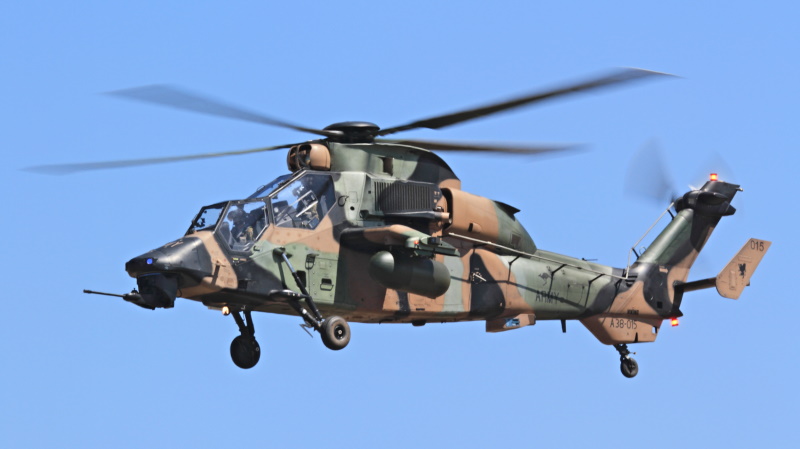
The Aussie Tiger was also fitted with an uprated MTR390E powerplant for "hot and high" operation, and featured minor changes to avionics, such as radios specified to Australian Army needs. Initial deliveries were in late 2004. Of the 22 machines to be delivered, four were shipped from France and the other 18 were assembled in Australia. Deliveries were completed in 2011. It was later qualified with the "Advanced Precision Kill Weapon System (APKWS)". APKWS is a standard 70-millimeter unguided rocket, retrofitted with a laser seeker module.
The Australians were not very happy with the Tiger, since it required considerable tweaking to get to work to their spec, and it was only declared fully operational in 2016. In 2021, the decision was made to replace it with the Boeing AH-64E Apache Guardian, with initial deliveries in 2025. By that time the Tiger was not seen as such a problem child -- but the Apache was seen as the way of the future, and the Australians couldn't support two different gunships. The switch did reflect a stronger Australian tilt towards the USA.
In any case, following the Australian Tiger buy, Airbus Helicopter then advanced a similar variant, the "HAD", again much like the HAP but with anti-armor missile capability, plus improved armor, a new rooftop sight, and the uprated MTR390E powerplants. In September 2003, the Spanish government announced a buy of 24 HAD Tigers. Spain became a full member of the Tiger group, with a stake in the program and sharing of manufacturing responsibilities. The Spanish HAD Tigers were to carry Spike-ER anti-armor missiles and Mistral AAMs. Since Spain had an outstanding need for helicopter gunships, six HAP Tigers were delivered ahead of time, to be later upgraded to HAD configuration.
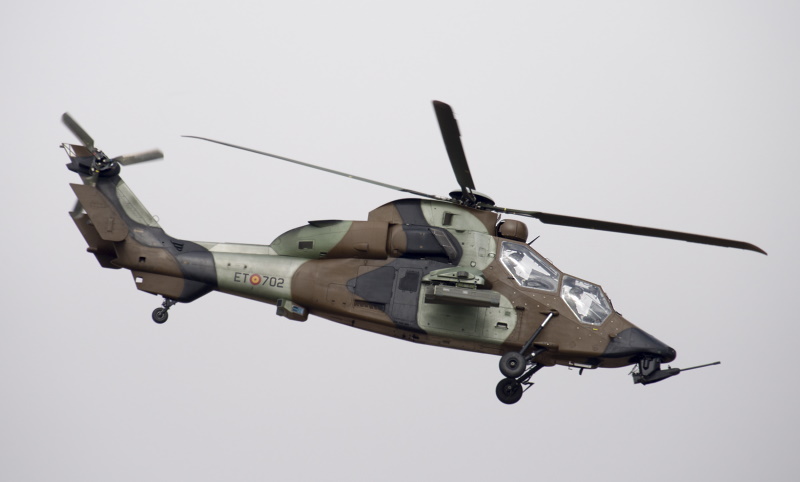
The French Army also found the HAD more attractive than the HAC variant, and so adjusted their order for Tigers from 70 HAP and 10 HAC to 40 HAP and 40 HAD machines, all the HAP machines being delivered by 2012. Armament included Hellfire anti-armor missiles -- delays in the Trigat program drove the French to use the Hellfire, which had been qualified for the Aussie Tiger program -- and Mistral AAMs. Initial flight of the first of two HAD prototypes was in December 2007.
Deliveries for HADs to both Spain and France began in 2013; shipments of the "Block 2" HAD began in 2015, this subvariant featuring digital communications, improved targeting accuracy, combat external tanks, and navalizations for shipboard use. 36 surviving French HAP Tigers are now being updated to HAD standard, the first being redelivered in 2017.
French forces put their Tigers to good use in Afghanistan, as well as in support of the Libyan uprising in 2012. German Tigers were committed to Afghanistan, following an upgrade to fit them for service with the "Afghanistan Stabilization German Army Rapid Deployment (ASGARD)" force with uprated engines, sand filters, improved defensive countermeasures, along with a mission data recorder and communications to support multinational operations. The first of a dozen upgraded ASGARD Tigers, as they were known, was deployed in late 2012, with the last of the batch being handed over in 2014.
Development of a "Tiger Mark III" mid-life update was initiated in 2018, with formal go-ahead in 2022. The upgrade will feature modernized avionics -- including updates to the mast-mounted and helmet-mounted sight, enhanced vision system, radios, datalinks for drone teaming, plus processing and navigation systems -- along with an updated countermeasures system, and support of the latest munitions. The Mark III is seen as both the basis of new manufacture, and upgrades of existing machines.
The program envisions the upgrade of 42 machines for France, with the possibility of 25 new helicopters, and 18 for Spain. The first prototype is scheduled for initial flight in 2025, with first deliveries to France in 2029 and Spain in 2030. The Mark III upgrade will permit the Tiger to stay in service to at least 2040.
However, the Germans balked at the Mark III upgrade and have decided to phase out their Tigers by 2038, to be replaced by an armed version of the Airbus H145M helicopter. There have been complaints that it's not an adequate replacement -- but given the way the Ukraine War highlighted the vulnerability of helicopter gunships on the battlefield, emphasizing the need for stand-off weapons and drone control, a cheaper and more flexible platform might be the right answer.
BACK_TO_TOP* Sources include:
Data pages on the FLUG REVUE website were also consulted.
* Illustrations credits:
* Revision history:
v1.0.0 / 01 mar 03 v1.0.1 / 01 may 03 / Review & polish. v1.0.2 / 01 mar 05 / Review & polish. v1.0.3 / 01 mar 07 / Review & polish. v1.0.4 / 01 apr 07 / Added comments on French use of Hellfire. v1.0.5 / 01 mar 09 / Review & polish. v1.0.6 / 01 feb 11 / Review & polish. v1.0.7 / 01 jan 13 / Review & polish. v1.1.0 / 01 dec 14 / Final deliveries of ASGARD Tigers. v1.1.1 / 01 nov 16 / Review & polish. v1.1.2 / 01 oct 18 / Review, update, & polish. v1.1.3 / 01 oct 20 / Review, update, & polish. v1.1.4 / 01 aug 22 / Review, update, & polish. v1.1.5 / 01 jul 24 / Review, update, & polish. (+)BACK_TO_TOP
